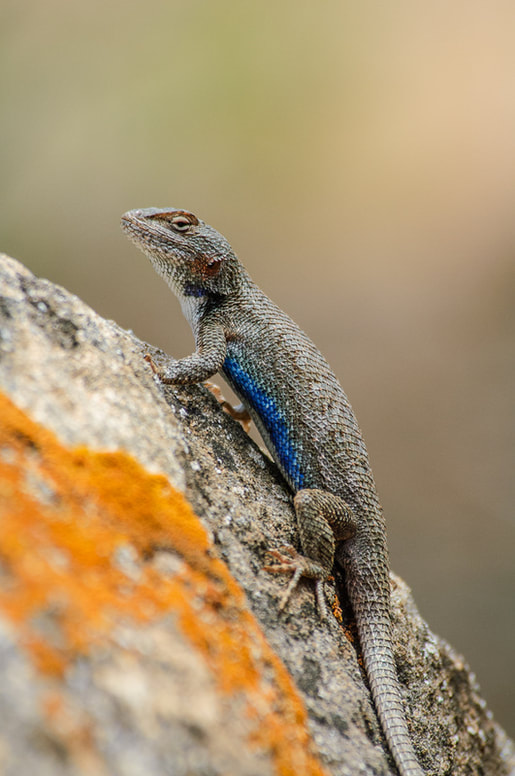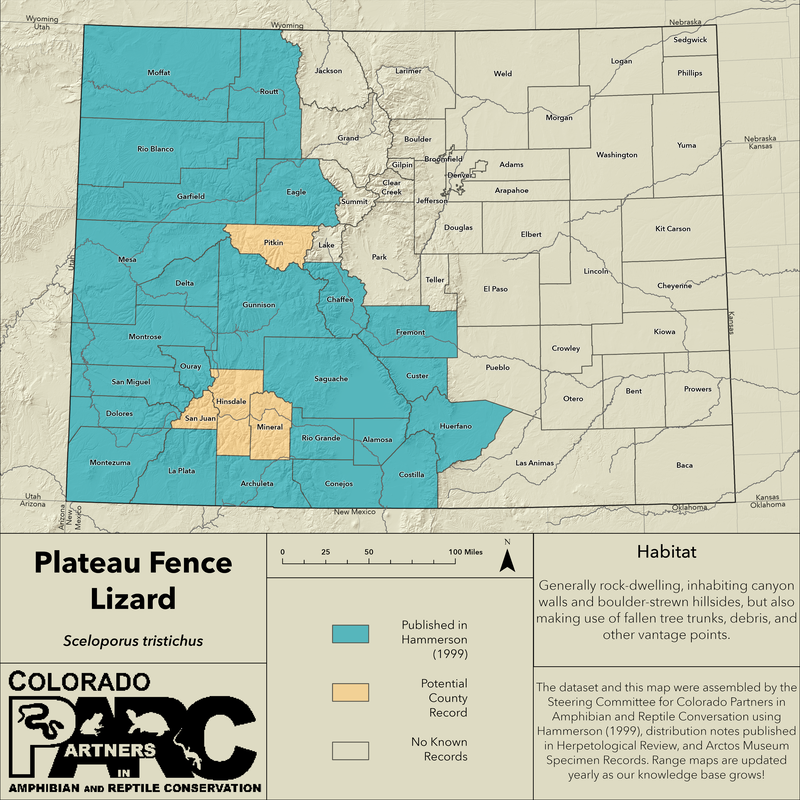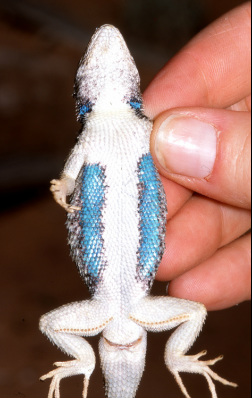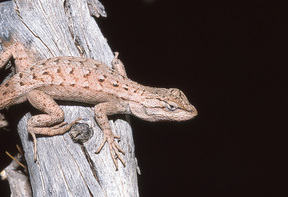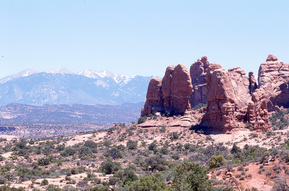General Distribution: Central Arizona north into southwestern Utah, diagonally across Utah into all of western Colorado, east into the San Luis Valley of Colorado.
Colorado Distribution: The range of Sceloporus tristichus in Colorado is not well-resolved. Here, we follow the most recent treatment based on Leaché and Reeder (2002), but for completeness, we also include relevant subspecific/historical designations of the 'old' Sceloporus undulatus complex (map below; click here for more details). Note that the map above shows S. tristichus ranging as far east as Chaffee, Fremont, Custer, and Huerfano counties. However, the species of Sceloporus in these counties is unlikely to be S. tristichus because all four counties are east of the Continental Divide. These populations are therefore more likely to be aligned with S. consobrinus (= "S. u. erythrocheilus").
Conservation Status: Nongame species in Colorado. NatureServe rank: Not ranked, Colorado Natural Heritage Program: Not ranked. General threats include habitat loss and fragmentation.
Diagnostic Features: Upper side of body with spiny scales. Coloration is varied, ranging from grayish, brownish, or greenish with a series of narrow indistinct dark brown cross-bands on both sides of midline. There is an elongated metallic blue patch on each side of the belly and each side of the throat. Both patches are more extensive in males than females. The throat patches usually do not meet at midline.
Diagnostic Features: Upper side of body with spiny scales. Coloration is varied, ranging from grayish, brownish, or greenish with a series of narrow indistinct dark brown cross-bands on both sides of midline. There is an elongated metallic blue patch on each side of the belly and each side of the throat. Both patches are more extensive in males than females. The throat patches usually do not meet at midline.
Size: Males smaller than females. Mature males and females from Montezuma County averaged 63 mm (2.5 in) and 67 mm (2.6 in), respectively (Douglas 1966). Mature females from Mesa County averaged 75 mm (2.9) snout-vent length (Tinkle and Ballinger 1972).
Habitat: Generally rock-dwelling, inhabiting canyon walls and boulder-strewn hillsides, but also making use of fallen tree trunks, debris, and other vantage points.
Activity: April to mid-September or late October.
Reproduction: Lays eggs. In Mesa County females lay two clutches of 5-12 eggs a year, one in May and the other in June (Tinkle and Ballenger 1972). Hatchings emerge mid-July-early September.
Feeding & Diet: A sit-and-wait predator. Primarily consumes terrestrial arthropods.
Defenses from Predation: Relies on cryptic coloration but always close to refugia in rocks, holes in ground, yuccas, or other surface cover in which they quickly take cover when approached.
Habitat: Generally rock-dwelling, inhabiting canyon walls and boulder-strewn hillsides, but also making use of fallen tree trunks, debris, and other vantage points.
Activity: April to mid-September or late October.
Reproduction: Lays eggs. In Mesa County females lay two clutches of 5-12 eggs a year, one in May and the other in June (Tinkle and Ballenger 1972). Hatchings emerge mid-July-early September.
Feeding & Diet: A sit-and-wait predator. Primarily consumes terrestrial arthropods.
Defenses from Predation: Relies on cryptic coloration but always close to refugia in rocks, holes in ground, yuccas, or other surface cover in which they quickly take cover when approached.
Cited & Additional Resources
- Degenhardt, W. G., C. W. Painter and A. H. Price.1996. Amphibians and reptiles of New Mexico. University of New Mexico Press, Albuquerque, New Mexico. 431 pp.
- Douglas, C.L. 1966. Amphibians and reptiles of Mesa Verde National Park, Colorado. University of Kansas Publ. Museum Natural History. 15:711-744.
- Hammerson, G. A. 1999. Amphibians and reptiles in Colorado. 2nd ed. University Press of Colorado, Boulder, Colorado. 484 pp.
- Leaché, A.D. 2009. Species tree discordance traces to phylogeographic clade boundaries in North American fence lizards (Sceloporus). Systematic Biology 58:547-559.
- Leaché, A.D. and T.W. Reeder. 2002. Molecular systematics of the eastern fence lizard (Sceloporus undulatus): a comparison of parsimony, likelihood, and Bayesian approaches. Systematic Biology 51:44-68.
- Tinkle, D.W. and R.E. Ballinger. 1972. Sceloporus undulatus: a study of the intraspecific comparative demography of a lizard. Ecology 53: 570-584.
Account compiled by: Tom Mathies and Joseph Ehrenberger
Reviewed by: Lauren Livo
Last updated: 4/14/2022 by Rémi Pattyn
Suggested Citation
Colorado Partners in Amphibian and Reptile Conservation. 2014. Species account for the Plateau Fence Lizard (Sceloporus tristichus). Compiled by Tom Mathies and Joseph Ehrenberger. http://www.coparc.org/plateau-fence-lizard.html [accessed date here].
Reviewed by: Lauren Livo
Last updated: 4/14/2022 by Rémi Pattyn
Suggested Citation
Colorado Partners in Amphibian and Reptile Conservation. 2014. Species account for the Plateau Fence Lizard (Sceloporus tristichus). Compiled by Tom Mathies and Joseph Ehrenberger. http://www.coparc.org/plateau-fence-lizard.html [accessed date here].

